Resilience and perseverance in the journey of Al Sharpton. A timeline of obstacles and growth.
Al Sharpton is a prominent American civil rights and social justice activist, Baptist minister, radio talk show host, and TV personality. He founded the National Action Network, a leading civil rights organization. Sharpton ran for the Democratic presidential nomination in 2004. He currently hosts the nationally syndicated radio show 'Keepin' It Real' and is a political analyst and weekend host for MSNBC's 'PoliticsNation,' solidifying his presence as a key voice in American political and social discourse.
1963: Family Relocation to Brownsville
In 1963, Sharpton's father left his wife, leading the family to move from middle-class Hollis, Queens, to public housing projects in Brownsville, Brooklyn, due to financial constraints.
1983: Sharpton Becomes FBI Informant
In 1983, Al Sharpton became an FBI informant following his involvement in a drug sting operation. He contributed to the indictments of several underworld figures.
December 22, 1984: Protests Against Goetz Acquittal
On December 22, 1984, Bernhard Goetz shot four African-American men on a New York City Subway. Al Sharpton led marches protesting the outcome of the trial in the Goetz case, where he was acquitted of most charges.
December 20, 1986: Howard Beach Assault
On December 20, 1986, three African-American men were assaulted in Howard Beach, Queens, leading to the death of Michael Griffith after being struck by a passing vehicle. This event spurred protests.
November 28, 1987: Tawana Brawley Incident
On November 28, 1987, Tawana Brawley was found with slurs written on her body and claimed she had been assaulted by six white men, some of them police officers.
1987: Tawana Brawley Case Involvement
In 1987, Al Sharpton was actively involved in publicizing the Tawana Brawley rape allegations in the media, which were later proven to be false.
1988: Sharpton's Informant Role
In 1988, Sharpton acknowledged that he informed for the government to combat crack cocaine in Black neighborhoods, denying that he informed on civil rights leaders.
August 23, 1989: Bensonhurst Attack and Death of Yusef Hawkins
On August 23, 1989, Yusef Hawkins, a 16-year-old African-American teenager, was shot and killed in Bensonhurst. Al Sharpton was involved in protests against this act of racial violence.
May 1990: Led Protest in Bensonhurst
In May 1990, Al Sharpton led a protest through Bensonhurst after one of the leaders of the mob involved in Yusef Hawkins' death was acquitted of the most serious charges.
January 12, 1991: Stabbing Attempt on Sharpton
On January 12, 1991, neighborhood resident Michael Riccardi tried to kill Al Sharpton by stabbing him in the chest before a demonstration in Bensonhurst. Sharpton recovered from his wounds.
January 1991: Planned Another March in Bensonhurst
In January 1991, Al Sharpton planned another march for January 12, 1991 in Bensonhurst, following light sentences given to other members of the gang involved in Yusef Hawkins' death.
August 19, 1991: Start of Crown Heights Riot
On August 19, 1991, the Crown Heights riot began after a car accident led to the death of Gavin Cato. The riot involved looting, violence, and clashes between black and Jewish residents, as well as the stabbing of Yankel Rosenbaum.
1992: Sharpton Derides Moderate Black Politicians
In 1992, Sharpton used derogatory terms to criticize moderate Black politicians aligned with the Democratic Party, referring to them as "cocktail sip Negroes" or "yellow niggers."
1993: Sharpton Pleads Guilty to Tax Evasion
In 1993, Sharpton pleaded guilty to a misdemeanor for failing to file a state income tax return. Authorities later discovered that his company, Raw Talent, was also not paying taxes.
February 13, 1994: Sharpton's Controversial Remarks at Kean University
On February 13, 1994, at Kean University, Sharpton made controversial statements, asserting Black people built empires while White people were in caves. He also used derogatory terms and criticized those proud of Mayflower ancestry. Sharpton defended his remarks at the time, though he later stated he no longer uses some of the terms.
December 8, 1995: Freddie's Fashion Mart Shooting
On December 8, 1995, Roland J. Smith Jr., a protester, attacked Freddie's Fashion Mart, shooting customers and setting the store on fire, resulting in multiple deaths and his own suicide.
1995: Freddie's Fashion Mart Protest
In 1995, Al Sharpton led a protest against the planned eviction of The Record Shack, a black-owned record store, by Freddie's Fashion Mart. Sharpton's rhetoric during the protest was later criticized.
December 1998: Tyisha Miller's Death
In December 1998, Tyisha Miller, a 19-year-old African-American woman, was fatally shot by police officers in Riverside, California, prompting protests led by Al Sharpton in May 1999.
May 1999: Tyisha Miller Protests and Arrest
In May 1999, Al Sharpton, along with Jesse Jackson, protested the fatal police shooting of Tyisha Miller in Riverside, California. Sharpton was arrested during these protests, which blocked traffic on SR 91.
1999: Amadou Diallo Protests
In 1999, Al Sharpton led protests to raise awareness about the death of Amadou Diallo, an immigrant from Guinea, who was shot dead by NYPD officers.
1999: Comparison to Amadou Diallo Killing
The Sean Bell shooting on November 25, 2006 drew comparisons to the 1999 killing of Amadou Diallo due to the involvement of NYPD officers and subsequent protests.
May 25, 2001: Imprisonment at Metropolitan Detention Center
On May 25, 2001, Al Sharpton was imprisoned at Metropolitan Detention Center, Brooklyn after being held in a Puerto Rican lockup for two days.
August 17, 2001: Release from Metropolitan Detention Center
On August 17, 2001, Al Sharpton was released from Metropolitan Detention Center after serving 90 days for trespassing charges.
2002: Ousmane Zongo Protests
In 2002, Al Sharpton was involved in protests following the death of Ousmane Zongo, an unarmed West African immigrant who was shot by an undercover police officer in Manhattan. He met with the family and provided legal services.
2002: HBO Airs FBI Sting Video of Sharpton
In 2002, HBO's Real Sports with Bryant Gumbel broadcast a 19-year-old FBI videotape showing Al Sharpton in an undercover sting operation. Sharpton was shown with an FBI agent posing as a drug lord, where the agent offered Sharpton a commission for arranging drug sales, though no deal was ever made and Sharpton faced no charges.
January 1, 2005: Campaign Debts
As of January 1, 2005, Al Sharpton's campaign had debts of $479,050 and owed Sharpton himself $145,146 for "Fundraising Letter Preparation — Kinko's".
November 25, 2006: Sean Bell Shooting
On November 25, 2006, Sean Bell was fatally shot by plainclothes detectives in Queens, New York, sparking public criticism of the police and drawing comparisons to the 1999 killing of Amadou Diallo.
May 7, 2007: Sharpton Accused of Bigotry in Debate with Christopher Hitchens
During 2007, on May 7, 2007, Sharpton was accused of bigotry for comments he made in a debate with Christopher Hitchens concerning presidential candidate Mitt Romney and his religion, Mormonism.
2007: Sharpton Reflects on Brawley Case
In 2007, Al Sharpton reflected on the Tawana Brawley case, stating that he might have handled certain aspects differently but would have largely approached it the same way. He defended his right to disagree with the grand jury's findings in the case.
March 11, 2008: Press Conference on Dunbar Village Rape Case
On March 11, 2008, Al Sharpton held a press conference highlighting what he described as unequal treatment in a high-profile rape case in West Palm Beach, Florida.
May 7, 2008: Sean Bell Case Protests and Arrests
On May 7, 2008, Al Sharpton coordinated peaceful protests at major river crossings in New York City in response to the acquittals of officers in the Sean Bell case. Sharpton and about 200 others were arrested.
May 9, 2008: Sharpton Owed Millions in Unpaid Taxes
On May 9, 2008, it was reported that Al Sharpton and his businesses owed almost $1.5 million in unpaid taxes and penalties, including federal income tax and money owed to New York state.
2008: Trial of Detectives in Sean Bell Case
In 2008, the trial for three of the five detectives involved in the Sean Bell shooting took place, with charges ranging from manslaughter to reckless endangerment. All were found not guilty.
2009: Tax Lien Related to Assessed Taxes During 2009
In 2009, taxes were assessed that later led to a federal tax lien against Al Sharpton in New York City for over $538,000.
September 29, 2010: IRS Filed Tax Lien Against Sharpton
On September 29, 2010, the IRS filed a notice of federal tax lien against Al Sharpton in New York City for over $538,000, related to taxes assessed during 2009.
October 15, 2010: Due Date Extended for Sharpton's 2009 Federal Income Tax Return
On October 15, 2010, the due date had been extended for Al Sharpton's year 2009 federal income tax return, amidst a tax lien dispute.
2012: Sharpton Leads Protests After Trayvon Martin Killing
In 2012, following the killing of Trayvon Martin by George Zimmerman, Al Sharpton led protests criticizing the Sanford Police Department's handling of the case and demanded Zimmerman's arrest. Sharpton argued that Zimmerman's actions were not justifiable, stating, "You cannot defend yourself against a pack of Skittles and iced tea." The protests and Sharpton's involvement drew criticism and support, highlighting the racial tensions surrounding the case.
April 2014: Sharpton Revealed as FBI Informant
In April 2014, documents obtained by The Smoking Gun indicated that Al Sharpton had become an FBI informant in 1983, playing a role in a drug sting involving Colombo crime family captain Michael Franzese. Sharpton allegedly recorded conversations with mobsters, contributing to indictments.
July 2014: Sharpton Organizes Protest After Eric Garner's Death
In July 2014, following the death of Eric Garner by a New York City Police Department officer, Al Sharpton organized a peaceful protest in Staten Island. Sharpton condemned the police's use of a chokehold on Garner, stating that "there is no justification" for it. He initially planned a protest involving a drive over the Verrazzano-Narrows Bridge but later opted for a peaceful march along Bay Street, where Garner died, drawing over 5,000 participants.
November 2014: Sharpton Owed Millions in Taxes
As of November 2014, Al Sharpton and his for-profit businesses owed $4.5 million in state and federal taxes, according to The New York Times.
August 2017: Sharpton Calls for Removal of Jefferson Memorial
In August 2017, Al Sharpton called for the federal government to cease maintaining the Jefferson Memorial in Washington, D.C., due to Thomas Jefferson's history as a slave owner. He argued that taxpayer funds should not support monuments to individuals who enslaved people.
June 4, 2020: Sharpton Delivers Eulogy at George Floyd's Funeral
On June 4, 2020, Al Sharpton delivered a eulogy at the funeral of George Floyd, calling for justice for Floyd and criticizing President Donald Trump's response to the situation.
2021: Sharpton Criticized for Tobacco Industry Ties
In 2021, Al Sharpton faced criticism for his involvement in a tobacco industry campaign against a proposed ban on menthol cigarettes, using arguments deemed "cynically manipulative." This occurred while his National Action Network accepted funding from tobacco companies, sparking controversy over potential conflicts of interest.
Mentioned in this timeline
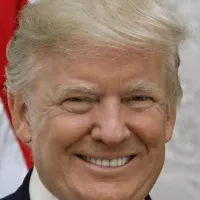
Donald John Trump is an American politician media personality and...
Home Box Office HBO is an American pay television service...
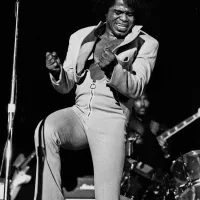
James Brown an iconic American singer songwriter dancer and musician...
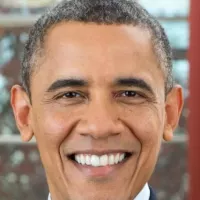
Barack Obama the th U S President - was the...

Martin Luther King Jr was a pivotal leader in the...
California is a U S state on the Pacific Coast...
Trending

6 months ago Julia Fox Ditches Beauty Trend, Net Worth Soars: An 'It Girl' in 2025
22 days ago DHS immigration crackdown hits Charlotte, sparking protests and local confusion.

2 months ago Tiwa Savage apologizes for Tyla's remarks, sparking online backlash and 'coloured' identity row.

Pepsi is a cola-flavored carbonated soft drink and the flagship product of PepsiCo As of it held the position of...
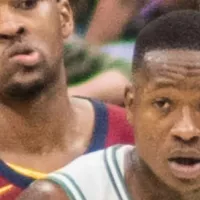
2 months ago Terry Rozier Returns: Hamstring Issue Resolved, Set to Play Against Orlando
3 days ago Mortgage Rates Fall: Refinance Opportunities and Lender Options Emerge in December 2025
Popular
Matt and Ross Duffer known as the Duffer Brothers are...

Candace Owens is an American conservative political commentator and author...
Aftyn Alyssa Behn is an American politician currently serving as...

Ilhan Omar is an American politician currently serving as the...

XXXTentacion born Jahseh Dwayne Ricardo Onfroy was a controversial yet...
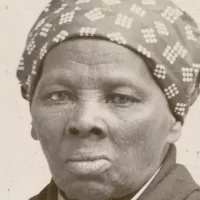
Harriet Tubman was a pivotal American abolitionist and social activist...
